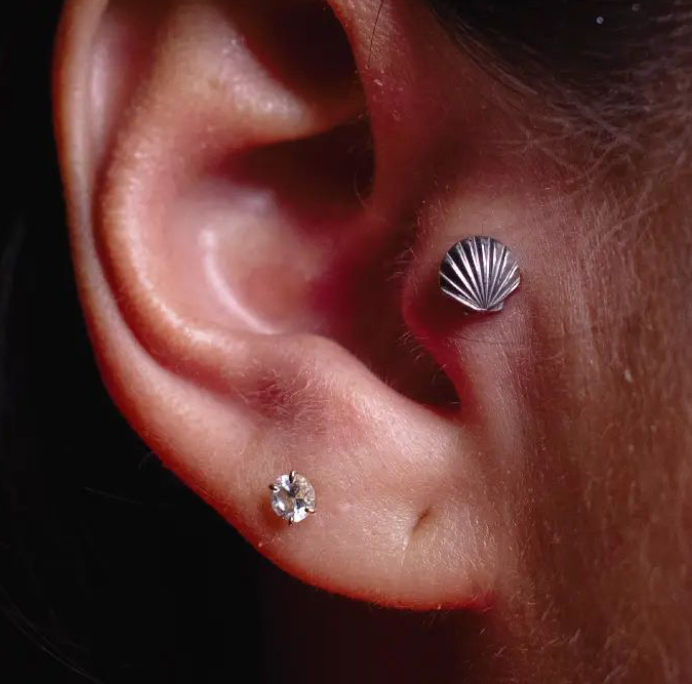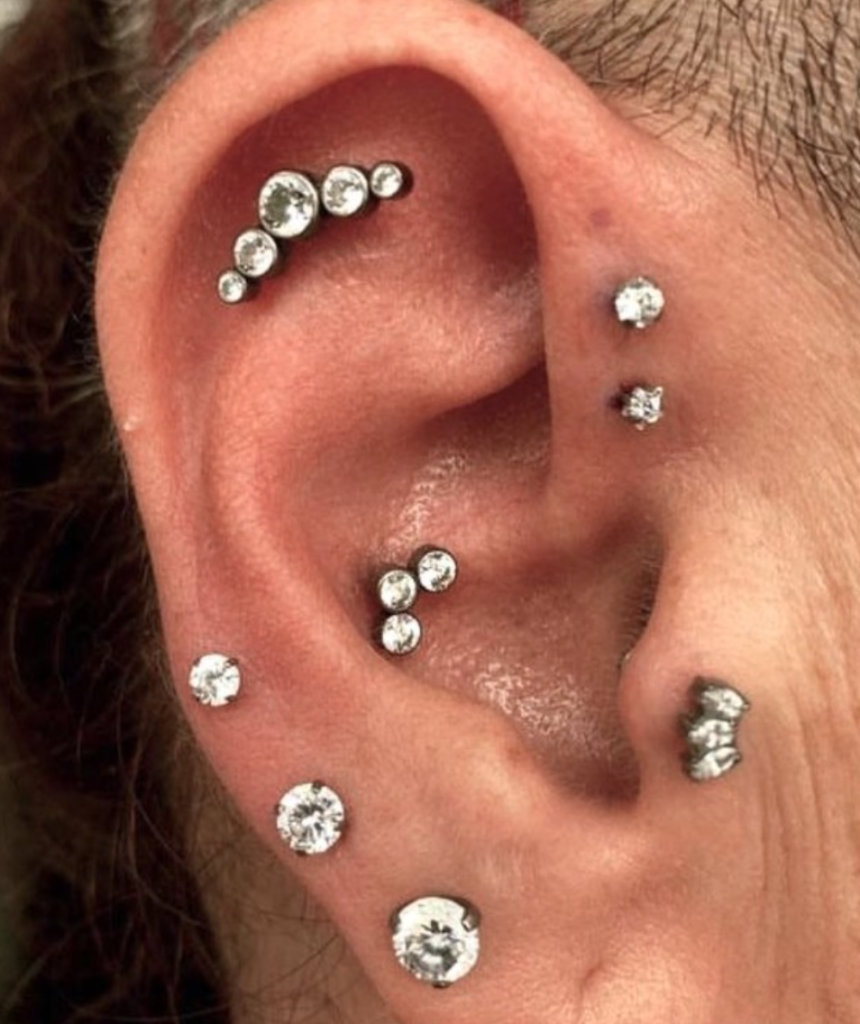
Martha Garro – Piercer & Junior Artist
6 plus years of experience piercing
Specialty: Line work
@MarTattooCR
Monteverde, Costa Rica

At Nova Tattoo we only work with the highest quality jewelry to guantee our clients safety and satisfaction.
Titanium Implant grade jewelry is a of superior material and you can leave it in your body for life; unlike steel that has to be changed every 6 months.
Prices range from 60 to 80 USD depending on the type of jewelry you choose, the perforation is included in the price.
We also have 14k gold pieces available.

AFTERCARE FAQ
WEEK 1 – THE MOST CRUCIAL STAGE
Always wash your hands before cleaning your piercing with a sterile saline solution.
DO NOT TOUCH UNLESS TO CLEAN!
NO SWIMMING / NO SAUNA / NO SUNBATHING / NO GYM
Clean piercing 2-3 times per day and don’t sleep on it
Do not press your dirty phone screen on your healing piercing
Just like other piercings, there is a wait time before you can change your earrings after getting them done. This is to ensure that the piercing heals properly without any infection. After getting your earlobes pierced, the wait time is generally around 6 to 8 weeks.For cartilage piercings, it can be up to 12 weeks
Keep using good quality jewelry for a minimum of 6 months
Do not change your piercing for a curved jewelry piece before 6 months, it needs to heal straight to avoid granulomas.
Healing time could take between 6 to 12 months with a great aftercare, during this process the area is still susceptible to infection and injury and these could delay your healing process
If you start getting a granuloma please speak to a professional piercer so they can help you further.
A piercing has the potential to be a temporary adornment (especially when compared to a tattoo), because the jewelry can easily be removed. There is a risk, however, of irreversible changes to the body, including discoloration, a mark such as a scar, bump, or dimple, or a permanent hole.
Many piercings shrink or close quickly, but some piercings will remain open indefinitely without jewelry in them. The placement of the hole, the length of time you have worn the piercing, the thickness of the jewelry that was in it, and your individual tissue all impact whether or not your piercing stays viable after removing the jewelry.
Piercings that are stretched to large dimensions commonly leave significant voids that may be considered disfiguring; to correct them, plastic surgery is required. Stretching a piercing too quickly or attempting to expand unsuitably thin tissue leads to problems. One potential consequence of overzealous stretching is a blowout (part of the interior channel is pushed out, leaving an unsightly lip of flesh on one side of the piercing). This distortion will usually be a lasting reminder of your hasty actions unless it is surgically removed. Piercings that are stretched improperly can also suffer from thinning tissue that does not regrow. A worst-case scenario is tissue necrosis (death) and the loss of the piercing and some of the skin in the area. Jewelry that exerts excessive pressure against underlying bone can cause bone necrosis.
There are piercings that have a tendency to effect changes such as the hardening or thickening of the tissue surrounding the openings, and this can be irreversible. For example, nipple piercings are known for causing permanent enlargement, especially in underdeveloped (small) anatomy.
Scarring and tissue discoloration at the piercing site are relatively normal occurrences, especially if you have a history of darkened scars. This can happen even when a piercing is performed properly and heals uneventfully. Migration often leaves a small track of scarring or discoloration from where the piercing was initially placed. Rejection usually results in a split scar. Piercings of the ear cartilage are prone to disfigurement if a serious infection develops. The cartilage can collapse, causing a cauliflower ear appearance.
Excessive scarring sometimes occurs in reaction to piercing, and it can be very difficult to resolve. If you have a history of problems with scarring or keloids (large growths of fibrous tissue), piercing is generally inadvisable.

